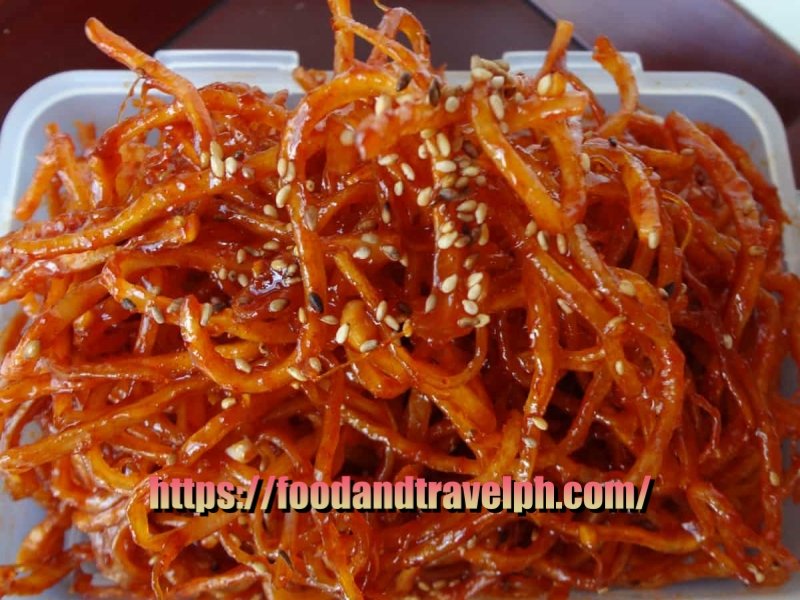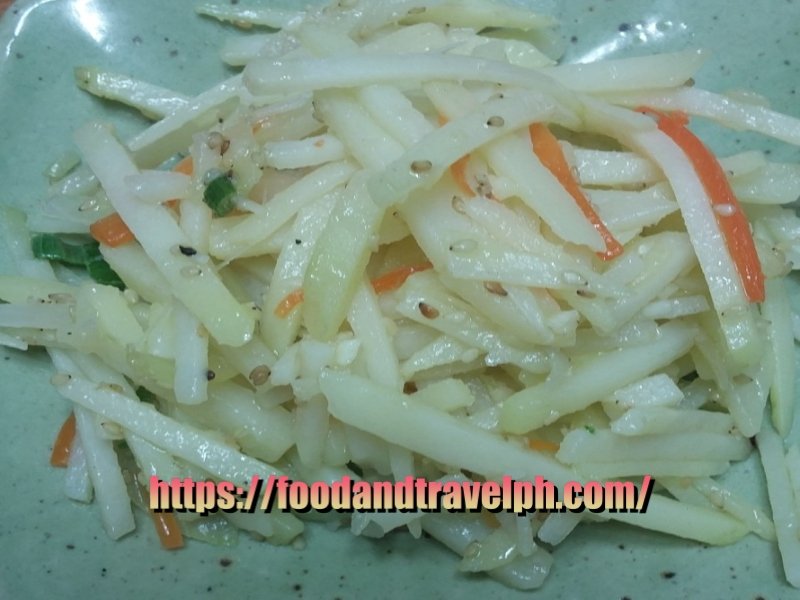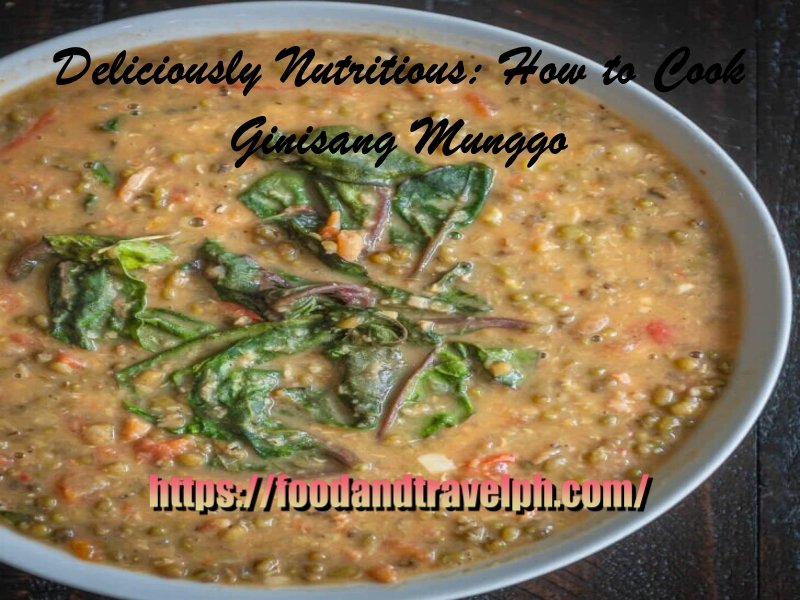How to make Korean Banchan

Korean cuisine is renowned for its rich flavors and diverse dishes, and one of its most beloved components is ‘banchan’. Often served as complimentary side dishes during meals, banchan adds depth and variety to the dining experience.
In South Korean cuisine, side dishes known as “banchan”. play a crucial role in enhancing the dining experience. They are typically served in small portions alongside the main dish and are meant to be shared among everyone at the table. Here’s an overview of 15 common South Korean side dishes.
What is banchan?
- Banchan refers to the small side dishes served along with cooked rice in Korean cuisine. They are an integral part of Korean meals and can include a variety of flavors and textures, from spicy and tangy to savory and mild.
Kimchi– is a traditional Korean side dish made from fermented vegetables. most commonly napa cabbage and korean radishes, with a variety of seasoning.
Ingredients: Napa Cabbage, Korean radish, scallions, ginger, garlic, fish sauce, Korean chili powder (gochugaru), salt, sugar.
Instructions: Salt the cabbage to draw out moisture. Create a paste with garlic, ginger , fish sauce, sugar, and gochugaru. Mix with cabbage and radish, pack tightly in jars, and ferment for several days to weeks.

Kkakdugi (Cubed radish kimchi)– is crunchy and refreshing, providing a nice contrast to softer dishes. It is commonly paired with soups and stews because its crisp texture and tangy flavor complement the warmth and heartiness of these dishes.
Ingredients: Korean radish, gochugaru, garlic, ginger, fish sauce, sugar and salt.
Instructions: Cube the radish, coat the salt, and let sit. Mix with gochuragu, garlic, ginger, fish sauce, and sugar. Store in jars to ferment.

Kongnamul Muchim (Soybean Sprout Salad)– This dish is simple yet nutritious, providing a good source of protein, vitamins and minerals. it is a common banchan in Korean meals, appreciated for its light, nutty flavor and crunchy texture.
Ingredients: Soybean sprouts, garlic, sesami oil, sesami seeds, salt, and scallions.
Instructions: blanch sprouts, drain and mix with minced garli, sesami oil, sesame seeds, salt and chopped scallions.

Ojingeochae Muchim (Spicy Shredded Squid)– This dish is chewy and flavorful, often enjoyed as a side dish or a snack. it balances spiciness with sweetness and tanginess, making it a popular choice among those who enjoy bold flavors.
Ingredients: Dried squid strips, gochujang, corn syrup, sesame oil , sesame seeds and garlic.
Instructions: Soften squid in water, then mix with gochujang, corn syrup garlic, sesame oil, sesame seed and garlic.

Gyeran Jjim (Steamed Egg Custard)– This dish served as a comforting side dish or breakfast item. It is east to prepare and can be cooked in a microwave, stovetop or claypot for a traditional touch.
Ingredients: Egg, water or stock, salt, scallions.
Instructions: Beat eggs with water/stock and salt, steam gently until set and garnish with scallions.

Sigeumchi Namul (Seasoned Spinach)– is a healthy and flavorful side dish commonly served in Korean meals. It’s packed with vitamins and minerals, offering a fresh and savory taste that enhances other components of a meal.
Ingredients: Spinach, garlic, sesame oil, sesame seeds and soy sauce.
Instructions: Blanch spinach, squeeze out excess water and mix with garic, sesame oil, sesame seeds and soy sauce.

Gamja Jorim (Braised Potatoes)– is hearty and satisfying, often served as a side dish. The potatoes absorb the sauce, becoming tender and flavorful, making it a favorite for both adults and children.
Ingredients: Potatoes, soy sauce, water, sesame oil, sesame seeds and garlic.
Instructions: Simmer diced potatoes in soy saucem sugar, and water until tender, finish with sesame oil and seeds.

Oi Muchim (Spicy Cucumber Salad)– is popular for its simplicity and vibrant flavor, providing a cool contrast to richer, heavier dishes in Korean cuisine. Cucumber is the main ingredient which makes it a low-calorie and hydrating option. The spiciness can be adjusted to taste.
Ingredients: Cucumbers, gochugaru, garlic, soy sauce, vinegar, sugar, sesame oil and scallions.
Instructions: Slice cucumbers, mix with gochuragu, garlic, soy sauce, vinegar, sugar, sesame oil and scallions.

Musaengchae (Spicy Radish Salad)– known for its crunchy texture and balance of sweet and spicy flavors. Radish is a staple in Korean cuisine, often praised for its digestive benefits and high vitamin C content. Musaengchae is commonly served with rice and other side dishes.
Ingredients: Korean radish, gochugaru, vinegar, sugar, garlic, sesame seeds.
Instructions: Julienne radish, mix with gochugaru, vinegar, sugar, garlic and sesame seeds.

Hobak Bokkeum (Stir-Fried Zucchini)– this dish highlights the natural sweetness of zucchini and is quick to prepare, making it a convenient addition to any meal. Zucchini is low in calories and rich in vitamins, providing a nutritious side option.
Ingredients: Zucchini, garlic, soy sauce, sesame oil, sesame seeds.
Instructions: Stir-fry zucchini with garlic, add soy sauce, and fiish with sesame oil and seeds.

Mu Jorim (Braised Radish)– is characterized by its savory and slightly sweet profile, with the radish absorbing the rich flavors of the braising liquid. It’s a comforting dish, often served with rice and other banchan.
Ingredients: Burdock root, soy sauce, sugar, water, sesame oil.
Instructions: Simmer sliced burdock root in soy sauce, sugar, and water until tender add sesame oil.

Gaji Namul (Seasoned Eggplant)– showcases the soft, silky texture of eggplant, which readily absorbs the flavors of the seasoning. Eggplant is a low-calorie vegetable that is high in fiber, making it a healthy addition to meal.
Ingredients: eggplant, garlic, soy sauce, sesame oil, sesame seeds.
Instructions: Steam eggplant, slices, mix with garlic, soy sauce, sesame oil and sesame seeds.

Gamja Bokkeum (Stir-fried Potatoes)– is popular for its simplicity and comforting taste. Potatoes provide a good source of carbohydrates and are naturally gluten-free, making this dish accessible to many diets.
Ingredients: Potatoes, garlic, soy sauce, sesame oil, sesame seeds.
Instructions: Stir-fry thinly sliced potatoes with garlic, add soy sauce, and finish with sesame oil and seeds.

Gosari Namul (Seasoned Fernbrake)– is a unique ingredients in Korean cuisine, known for its earthy flavor and chewy texture. It is often included in bibimbap and other traditional meals. Preparing gosari requires soaking and boiling to soften the fernbrake.
Ingredients: Dried gosari (fernbrake), garlic, soy sauce, sesame oil, sesame seeds.
Instructions: Rehydrate gosari, simmer with garlic and soy sauce, finish with sesame oil and seeds.

Kkaennip Jjim (Steamed Perilla Leaves)– is a traditional Korean dish that highlights the unique flavor and aroma of perilla leaves. These leaves belong to the mint family and are known for their slightly nutty and minty taste.
Ingredients: perilla leaves, garlic, soy sauce, sesame oil, sesame seeds and chili pepper.
Instructions: Fresh perilla leaves are washed and patted dry. A mixture of soy sauce, minced garlic, sesame oil, sesame seeds and optional ingredients like sugar, or red pepper flakes is prepared. Each leaf is brushed or dipped in the marinade to ensure even coating.

Storage tips
- Kimchi & Kkakdugi– Store in airtight containers in the refrigerator, Can last for months due ti fermentation, but flavor will intensify over time.
- Kongnamul Muchim & Sigeumchi Namul– Store in airtight container in the refrigerator for up to 3-4 days.
- Ojingeochae Muchim– Keep in an airtight container; can last up to a week refrigerated.
- Gyeran Jjim– Best eaten fresh but can be stored for up to 2 days in the refrigerator.
- Gamja Jorim & Mo Jorim– Store in the refrigerator for up to 4-5 days,
- Oi Muchim & Musaengchae– Best eaten fresh but can be refrigerated for up to 2 days.
- Hobak Bokkeum & Gaji Namul– Store in the refrigerator for up to 3-4 days.
- Gosari Namul– can be refrigerated for up to a week.
- Gamja Bokkeum– Store in the refrigerator for up to 3-4 days.
- Kkaennip Jjim– can be stored in the refrigerator for several weeks due to the pickling.
Korean banchan are an essential part of a Korean meal, offering a variety of flavors and textures that complement the main dishes. They are usually simple to prepare and can be made in advance. Proper storage is essential to maintain their freshness and flavor, with many lasting several days in the refrigerator, while fermented options like kimchi can last much longer.
Yukgaejang: The Ultimate Korean Spicy Beef Soup Recipe
How to cook Yukgaejang Yukgaejang is a vibrant and flavorful Korean beef soup known for its rich, sp…
A Guide to Making Delicious Ojingeo-Bokkeum (Spicy stir fried squid)
Ojingeo-Bokkeum (Spicy stir fried squid) Recipe Ojingeo-Bokkeum (Spicy stir fried squid), a fiery an…
Coconut Bliss: The Magic of Adobong Manok sa Gata
Adobong Manok sa Gata Recipe Adobong Manok sa Gata is a Filipino dish that beautifully marries the c…
Savor the Flavors of the Philippines: A Guide to Cooking Chicken Afritada
How to cook Chicken Afritada Chicken Afritada is a popular Filipino dish that features chicken piece…
Deliciously Nutritious: How to Cook Ginisang Munggo
Munggo Recipe Ginisang Munggo is a popular Filipino dish made primarily from mung beans, often enjoy…
Exploring the World of Korean Banchan: 15 Must-Try Side Dishes
How to make Korean Banchan Korean cuisine is renowned for its rich flavors and diverse dishes, and o…









Leave a Reply